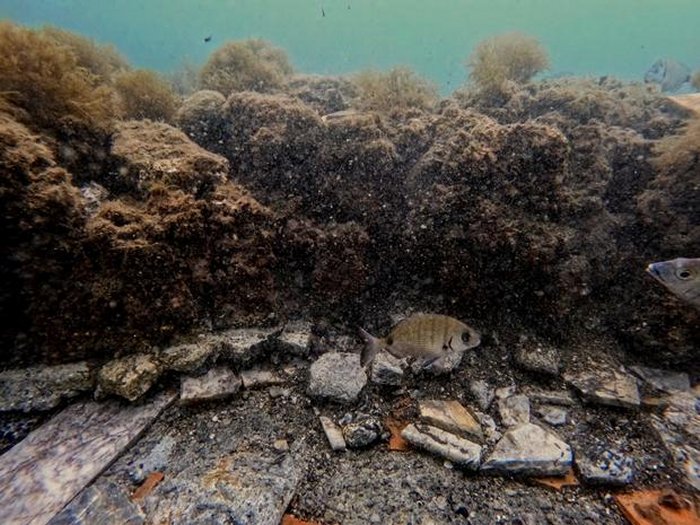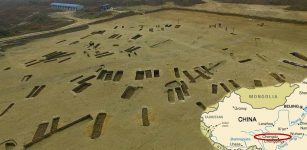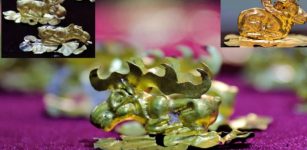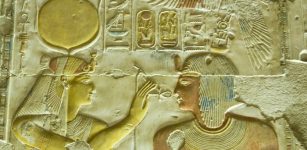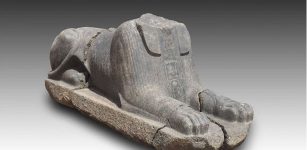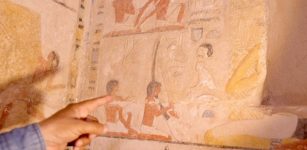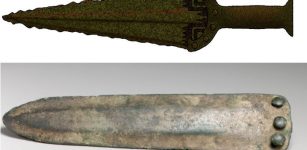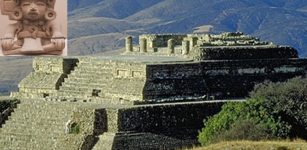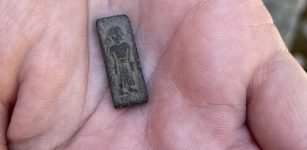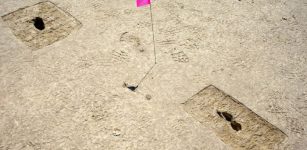Amazing Ancient Roman Marble Floor Found In The Underwater City Of Baiae, Italy
Jan Bartek - AncientPages.com - Archaeological exploration of the submerged city of Baiae in the Gulf of Naples, Italy, has yielded a significant discovery on the seabed. The Roman city of Baiae, situated near the renowned ruins of Pompeii, has been gradually submerged over centuries due to volcanic activity in the region.
A photo of the opus sectile excavated and restored at the submerged Villa. Credit: Edoardo Ruspantini
The ancient Roman resort of Baiae was a highly esteemed destination that attracted the most affluent and influential members of Roman society, including Julius Caesar, Nero, Cicero, and Hadrian. The locale was renowned for its opulent villas along a picturesque coastline and therapeutic hot springs, which emanated from subterranean volcanic vents and were believed to possess curative properties.
However, over time, Baiae acquired a reputation for hedonistic pursuits. The eminent Stoic philosopher Seneca disapproved of the city, characterizing it as a location to be avoided due to its prevalence of vice and moral transgressions. He observed inebriated individuals traversing the beach while boisterous revelry disrupted the tranquility he sought.
Riccardo Mancinelli of CSR Restauro Beni Culturali worked on restoring the marble floor of the Villa with prothyrum entrance in the Sunken Park of Baia. Credit: Parco Archaeologico Campi Flegrei
Ultimately, Baiae's decline resulted from historical and geological factors. As the Roman Empire disintegrated, the city fell victim to incursions by invading forces. In the eighth century C.E., Muslim armies plundered it. Furthermore, in the 16th century, due to volcanic activity within the Phlegraean Fields—a supervolcano upon which Baiae was situated—the city subsided below sea level, sealing its fate.
The Baiae's underwater structures have maintained integrity, enabling researchers to uncover artifacts like the recently discovered mosaic floor.
Archaeologists have retrieved various ancient relics from the submerged city through numerous excavations. The latest addition is a polychromatic marble floor, currently undergoing restoration. Experts hypothesize that this ancient mosaic floor once served as the foundation of a Roman villa owned by a high-status individual in the third century C.E.
The design would have incurred substantial costs for the owner, who used reclaimed materials, likely sourced from other flooring or wall structures, to create the composition. The configuration comprises numerous acute-angled quadrilaterals, each surrounded by engraved circular elements.
According to official communications from the Archaeological Park of the Phlegraean Fields made on FB, the floor comprises thousands of marble slabs arranged in intricate geometric patterns, comprising hundreds of distinct shapes.
Credit: Edoardo Ruspantini
Credit: Edoardo Ruspantini
This floor is an example of "opus sectile,"a mosaic technique that incorporates various colored materials, including marble, shell, mother-of-pearl, and glass. Artisans cut these materials into specific shapes and inlay them to create diverse designs and patterns. This particular mosaic technique differs from the more common tessellated mosaics, which feature patterns formed from numerous smaller cubes of stone or glass.
"This marble floor has been at the center of the largest underwater restoration work," the park said, calling the research "a new challenge" and made "very complicated due to the extreme fragment of the remains and their large expansion."
See also: More Archaeology News
Park authorities report that the archaeological team is meticulously extracting marble fragments from the site. The recovery process requires precise excavation around collapsed structures and fragmented slabs to preserve as much of the original geometric patterns as possible. After retrieval, workers will transport the marble components to land facilities, where they will undergo thorough cleaning in freshwater tanks. Subsequently, experts will comprehensively analyze each slab to reconstruct the original mosaic composition.
Park officials state that although the project is extensive and complex, they are confident it will yield numerous insights and significant academic rewards.
Written by Jan Bartek - AncientPages.com Staff Writer




